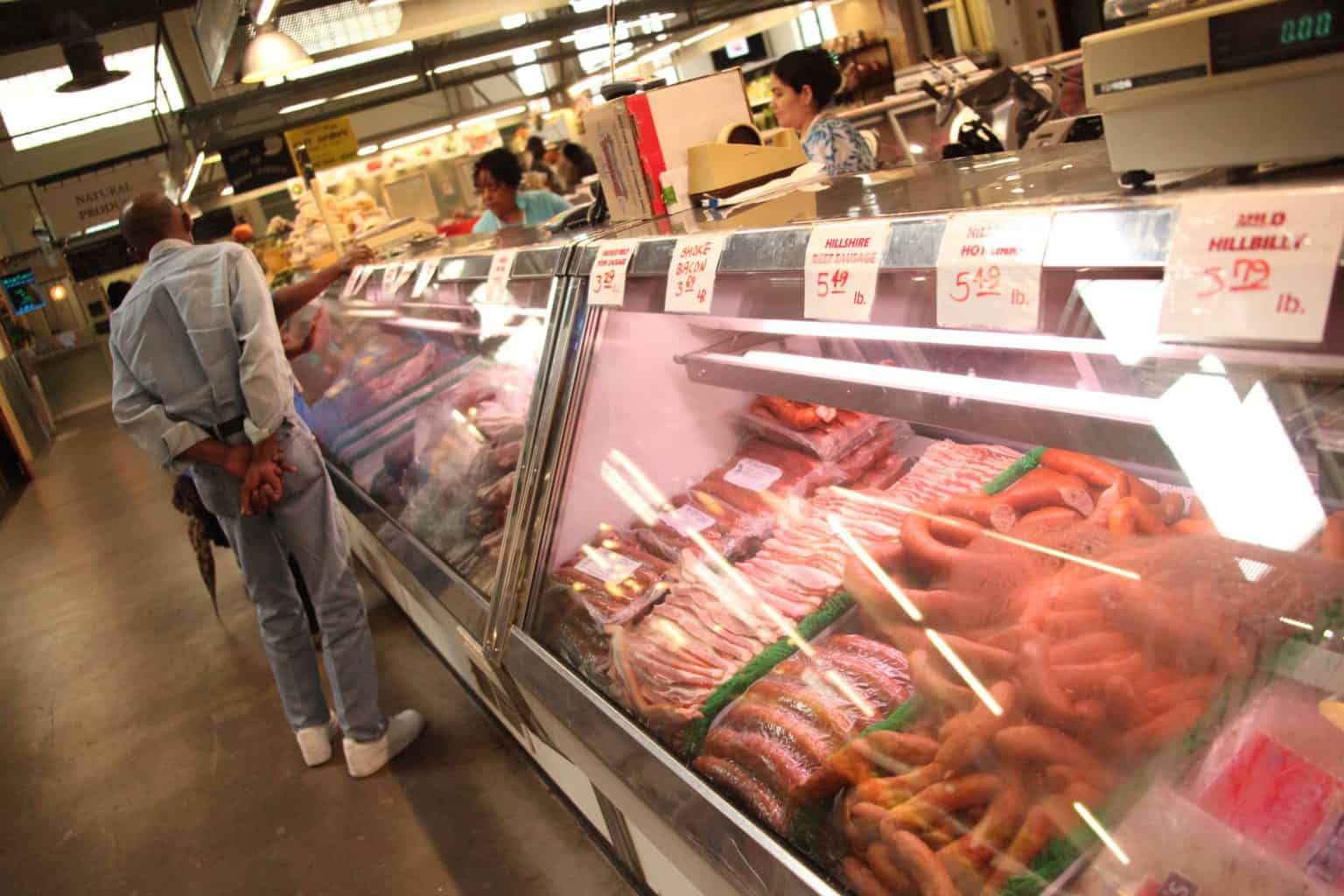Explore fresh meats and more at Bagley Meat Market Edwardsville IL in Edwardsville, IL.
Explore fresh meats and more at Bagley Meat Market Edwardsville IL in Edwardsville, IL.
Blog Article
Just How to Choose the Perfect Cut of Meat From a Trusted Meat Market
Selecting the optimal cut of meat from a trusted meat market needs a thoughtful method that balances quality, culinary function, and spending plan. Recognizing the different kinds of meat and their respective cuts is essential, as is engaging with your butcher to gain understandings into sourcing and prep work.
Recognizing Meat Cuts


For example, the tenderloin is valued for its buttery structure and very little connective cells, making it perfect for fast food preparation methods such as cooking or pan-searing. In contrast, tougher cuts like the brisket or shank advantage from slow-moving food preparation methods to break down collagen, producing abundant and delicious outcomes.
Furthermore, the fat content of a cut plays a vital function in taste profile and dampness retention during cooking. Cuts with greater fat content, such as ribeye, use a more durable flavor, while leaner alternatives, like sirloin, may require careful prep work to stay clear of dry skin (bagley meat market edwardsville il). Comprehending these subtleties enables educated options that elevate cooking productions, ensuring that each dish showcases the most effective high qualities of the chosen meat
Variables to Take Into Consideration
When choosing the perfect cut of meat, numerous essential elements come into play that can dramatically influence the final dish. Think about the kind of meat you desire-- beef, pork, lamb, or fowl-- as each offers special flavors and structures. The particular cut within that category is similarly important; as an example, ribeye delivers abundant marbling, while tenderloin offers a lean, buttery texture.
Another variable is the cooking method you plan to utilize. Cuts appropriate for grilling, such as T-bones or sirloins, differ from those much better matched for slow food preparation, like chuck roasts or shanks. In addition, quality is vital; always pick meat with a vibrant color and firm structure, signifying top quality and proper handling.
Furthermore, consider the resource of the meat. A relied on meat market commonly offers in your area sourced, hormone-free, and grass-fed alternatives, which can enhance taste and dietary worth. Your budget will certainly assist your selection. Costs cuts might offer phenomenal taste, yet there are additionally cost-effective choices that, when prepared appropriately, can produce tasty outcomes. Balancing these factors will assist you select the excellent cut for your cooking needs.
Inquiries to Ask Your Butcher
A butcher's experience can be important when selecting the suitable cut of meat for your culinary undertakings. Beginning by inquiring about the source of the meat.
Next, ask regarding the various cuts available for the kind of meat you favor. A knowledgeable butcher will certainly clarify the nuances of each cut, helping you choose one that matches your food preparation technique and preferred end result. Do not be reluctant to ask about the most effective food preparation strategies for a details cut; butchers typically have suggestions that can boost your meal.
It's also prudent to ask Bonuses concerning the meat's freshness. Ask about the distribution routine and how frequently the meat is replenished. This will certainly give you self-confidence in the top quality of what you are acquiring. Ask for recommendations based on your individual preference choices. An excellent butcher will certainly be excited to share their proficiency and suggest cuts that will delight your palate. Involving your butcher with these inquiries can significantly boost your meat selection experience.
Recognizing Quality Meat

Structure is one more crucial variable; high quality meat must really feel solid and a little bouncy to the touch. Prevent any type of cuts that really feel slimy or excessively completely dry, as these can indicate perishing or improper storage. Additionally, scent plays an important function; fresh meat needs to have a tidy, neutral fragrance, while any kind of off-putting or sour smells are warnings.
Last but not least, consider the source. Buying from a trusted meat market, where the meat's origin is recognized, can guarantee greater top quality standards. By concentrating on these indicators-- color, marbling, texture, scent, and resource-- you can confidently choose cuts that will boost your food preparation and dining experience.
Food Preparation Approaches for Each Cut
Selecting the right food preparation method is vital for taking full advantage of the taste and tenderness of each cut of meat. Various cuts have distinct characteristics that determine the most suitable food preparation strategies.
For tender cuts, such as filet mignon or ribeye, dry heat techniques like grilling, broiling, or pan-searing are excellent. Alternatively, harder cuts, such as chuck or brisket, benefit from moist warm approaches, including braising or slow-moving food preparation.
Pork chops and chicken breasts are functional and can be prepared using both dry and damp techniques. While cooking or roasting can look at this now yield delicious outcomes, poaching or sautéing can maintain dampness and inflammation. For lamb, methods like roasting or braising are recommended, as they match the meat's durable flavor.

Verdict
To conclude, choosing the ideal cut of meat from a credible meat market necessitates a detailed understanding of meat cuts and factor to consider of various factors, including source, quality, and food preparation approaches. Involving with the butcher via targeted questions can produce valuable understandings and recommendations tailored to specific cooking needs. Prioritizing both high quality and spending plan will boost the overall gastronomic experience, ensuring that the picked cut fulfills assumptions in both taste and preparation.
Report this page